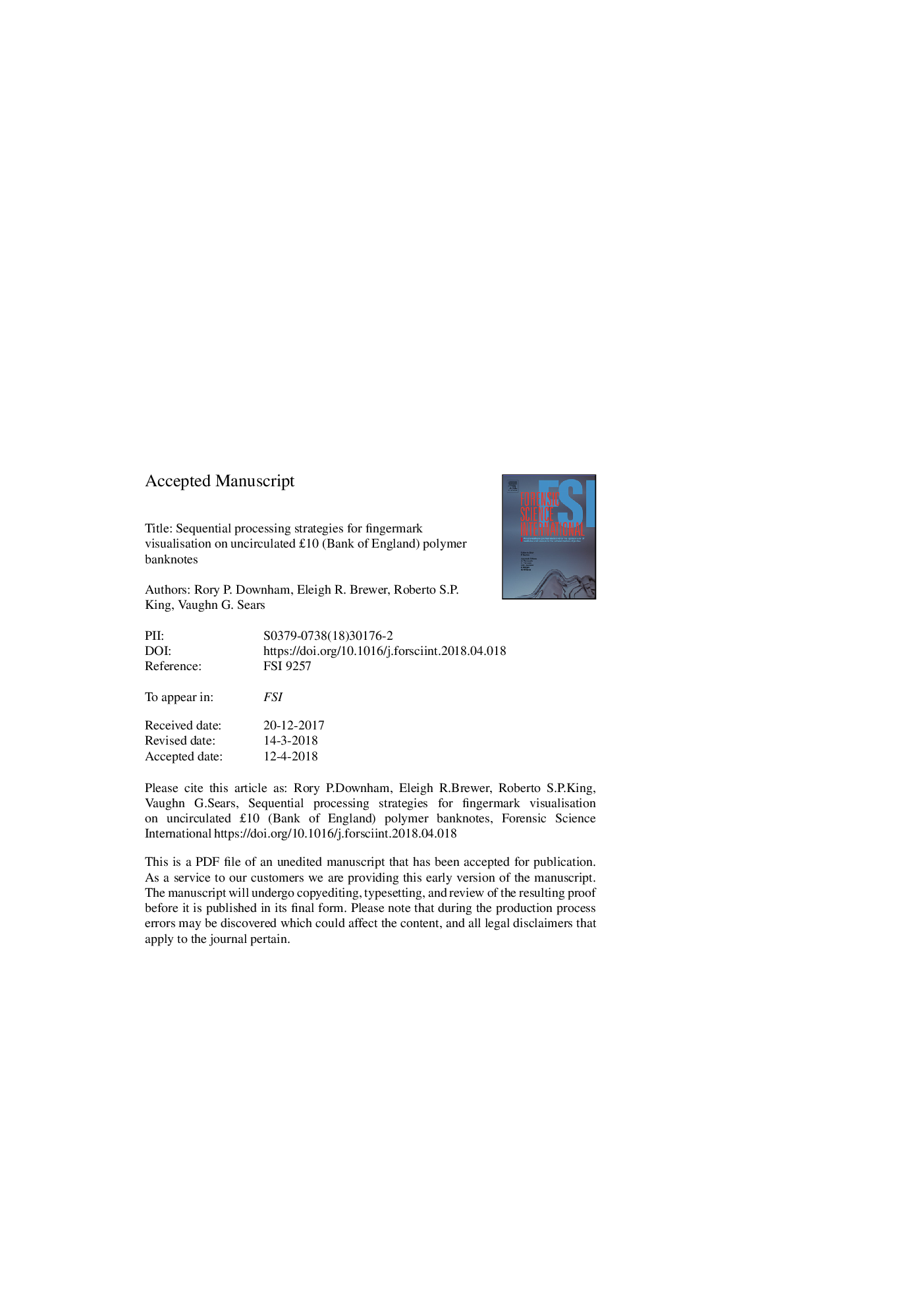| Article ID | Journal | Published Year | Pages | File Type |
|---|---|---|---|---|
| 6550933 | Forensic Science International | 2018 | 56 Pages |
Abstract
After each process was applied, fingermark development was assessed under primary viewing conditions appropriate to the technique (white light or fluorescence). All samples were also assessed under secondary viewing conditions; provided by the optical processes infrared reflection and long-wave ultraviolet reflection, and by gelatin lifting (with scanning). These additional techniques reduced the interfering effect of the complex banknote backgrounds and improved the contrast of enhanced fingermarks. Overall, with all assessment conditions considered, sequence 4 and sequence 3 visualised the most identifiable quality fingermarks (92.2% and 89.1% respectively). The most effective overall process used singularly was found to be black magnetic powder, provided that reflected infrared was used to image the results (82.8%). Further data analysis revealed that sequence 1 was the most effective sequence for fresh marks (aged 2-3Â days) when only primary viewing conditions within the visible part of the spectrum are considered. The need for further work which considers the sensitivity of the processes, and how they perform on BoE polymer banknotes that have become worn in circulation, is emphasised.
Keywords
Related Topics
Physical Sciences and Engineering
Chemistry
Analytical Chemistry
Authors
Rory P. Downham, Eleigh R. Brewer, Roberto S.P. King, Vaughn G. Sears,
